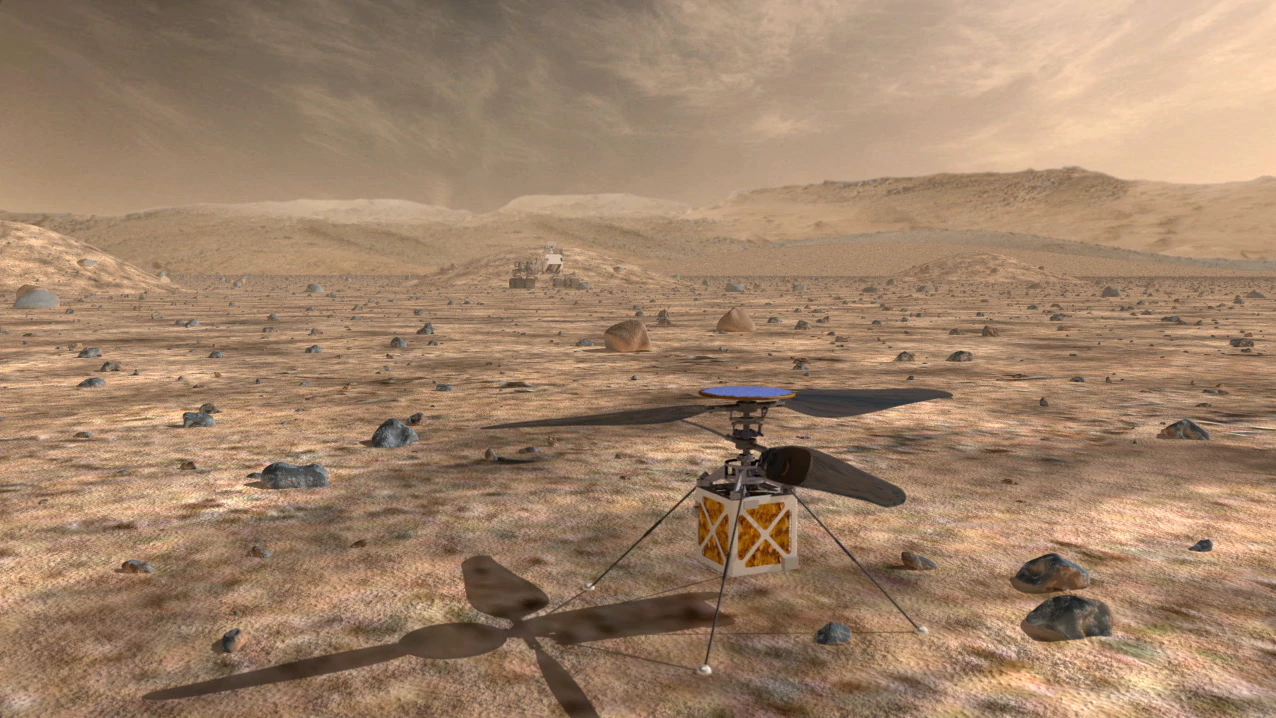The exploration of Mars has taken place either in orbit or on the surface. So far, the vehicles that have been sent to Mars and landed on the surface have been wheeled. They have had to navigate across a rough landscape, avoiding many obstacles. Thus, they have been confined to areas which are mostly open and flat.
NASA has announced that a Martian helicopter will be bundled with a Mars Rover that is going to be launched in July of 2020 and land on Mars in February 2021. The purpose of the Helicopter is to demonstrate the feasibility of deploying heavier than air craft to Mars.
The Martian Helicopter project began in August of 2013 at the NASA Jet Propulsion Laboratory. (JPL) The team spent four years designing and testing the Helicopter.
Associate Administrator for NASA's Science Mission Directorate said, "Exploring the Red Planet with NASA's Mars Helicopter exemplifies a successful marriage of science and technology innovation and is a unique opportunity to advance Mars exploration for the future. After the Wright Brothers proved 117 years ago that powered, sustained, and controlled flight was possible here on Earth, another group of American pioneers may prove the same can be done on another world.”
The Martian Helicopter is the size of a softball and weights about four pounds. It has been designed to fly in the atmosphere of Mars which is one one hundredth the density of the Earth’s atmosphere.. The Helicopter has two blades that will spin at about three thousand revolutions per minute which is about ten times faster than the blades of an Earth helicopter spin. The Helicopter contains solar cells to charge lithium ion batteries and a heating mechanism to keep it warm during the Martian nights when the temperature can drop to -225 degrees Fahrenheit.
There will be thirty days dedicated to tests for the Helicopter. The Rover will carry the Helicopter to a good place to take off and, after dropping off the Helicopter, will retreat to a safe distance. For the first flight, the Helicopter will climb to about ten feet and hover for thirty seconds. Five flights will take the Helicopter further and further up to a few hundred meters and durations of up to ninety seconds.
NASA administrator Jim Bridenstine said, “The idea of a helicopter flying the skies of another planet is thrilling. The Mars Helicopter holds much promise for our future science, discovery, and exploration missions to Mars.”
Although the Martian Helicopter is technically a drone because no one is riding in it, it was decided to refer to it as a helicopter. The distance from Earth to Mars varies from about thirty-four million miles to about sixty-three million miles. This is two far away to control the Martian Helicopter remotely, so it will have to use artificial intelligence to guide its own flight.
The project manager at the Jet Propulsion Laboratory said, “The altitude record for a helicopter flying here on Earth is about 40,000 feet. When our helicopter is on the Martian surface, it's already at the Earth equivalent of 100,000 feet up.”
NASA is referring to the Martian Helicopter mission as “high risk”. In a statement, a NASA spokesperson said, “If it does not work, the Mars 2020 mission will not be impacted. If it does work, helicopters may have a real future as low-flying scouts and aerial vehicles to access locations not reachable by ground travel.”
